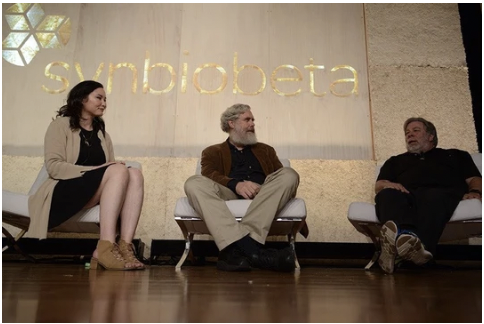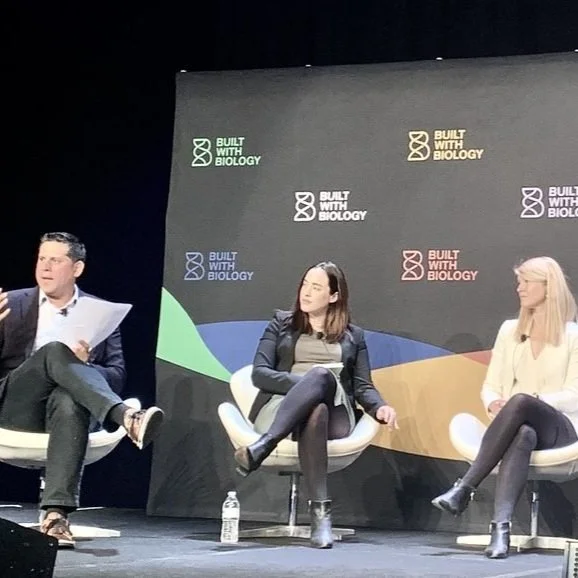Four Lessons from SynBioBeta 2018
I just got back from this year’s SynBioBeta conference in San Francisco. It was the most well-attended, most exciting SBBSF so far. I ran two well-attended panels: one on the decentralization of technology, the other on the influence of science fiction on synthetic biology, and synthetic biology on science fiction.
The conference opened with a conversation between Apple co-founder Steve Wozniak and Harvard/MIT professor and synthetic biologist George Church, moderated by BioCurious founder Eri Gentry.
Here’s a few lessons from that interview and the conference.
Lesson 1: Have a strategy.
Wozniak told story after story. One struck me as especially relevant to the strategic planning we help our customers do for their marketing programs.
Apple’s strategy, he said, had been to make technology easy to use.
Lesson 2: Be flexible with your strategy.
Woz said that the biggest increase in Apple’s value occurred the day they extended that strategy to outside developers by opening the app store.
In other words, by creating a platform that allowed others to leverage Apple’s already easy-to-use technology, they expanded their market share. [1]
Lesson 3: Tell a story that fits your strategy.
Apple is the master of corporate storytelling. And their stories always fit their strategy: “There’s an app for that.” “Think Different.”
Throughout the conference, I kept hearing about the need for scientists and founders to better engage the public.
In other words, get comfortable with storytelling.
This is especially important today given the level of noise, and given the anti-science sentiment that many people seem to have.
And get comfortable with the different formats you need to tell your story in. (More on that below.)
Lesson 4: Plan on how and where to tell your story.
It’s not enough to have a strategy or tell a story.
You need a plan for telling that story, across venues and formats.
Ideally, that starts by testing the story with your audience, then adapting it to fill their needs for information and preferences for how to receive that information.
Carrying out your plan means telling your story on your website, at conferences, and in media.
For that, you build a content marketing stack, a collection of articles, blog posts, email campaigns, presentations, webinars and videos that tell your story to different audiences in varying formats. (I’ll expand on that in a future newsletter).
Believe me, you need a plan to do this and be successful at it.
[1] The App Store (which is only 10 years old) has driven all sorts of innovations: content streaming, geolocation, ecommerce, and business model innovation; however, Steve Jobs wanted Apple to develop apps for the original iPhone. He was opposed to third-party apps running on the iPhone. Developers, however, were unhappy with the iPhone’s “closed” platform and protested.
If you enjoyed this post, here are some others you may enjoy.





